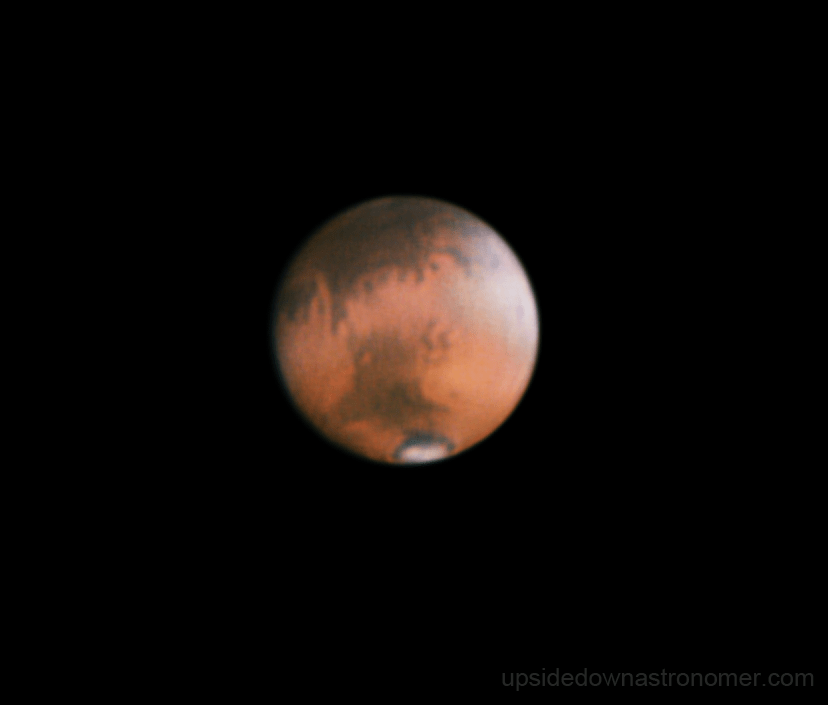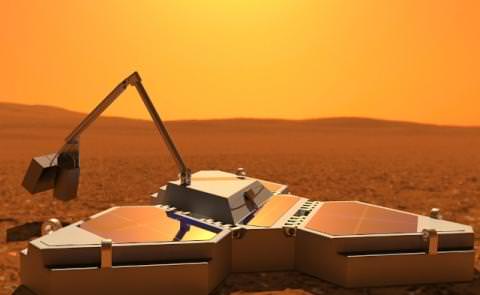Ready to explore the Red Planet? Starting in May, Mars invades the evening skies of the Earth, as it heads towards opposition on May 22nd. Not only does this place Mars front and center for prime time viewing, but we’re headed towards a cycle of favorable oppositions, with Mars near perihelion, while Earth is near aphelion. Continue reading “Into the Red: Our Complete Guide to Mars Opposition 2016”
Teasing the Galactic Ghoul, Past and Present
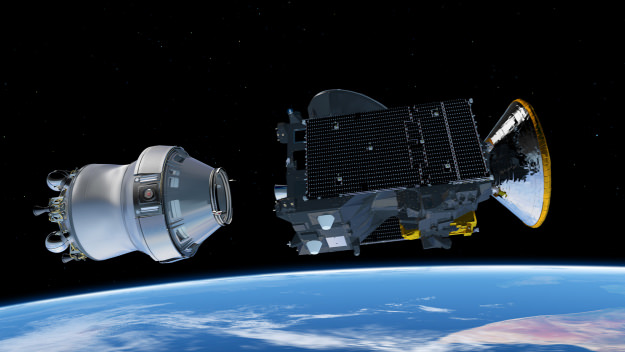
Launch. It’s the part of spaceflight that is always the most fraught with peril, as your precious and delicate scientific package is encapsulated on top of tons of explosives, the fuze is lit, and the whole package hurls spaceward.
As noted by Bob King earlier last week on Universe Today, the European Space Agency’s ExoMars Trace Gas Orbiter underwent just such an ordeal on March 14th, as it broke the surly bonds atop a Russian Proton rocket from the Baikonur Cosmodrome, and headed towards the Red Planet with the Schiaparelli Lander affixed snug to its side. The spacecraft may have very nearly suffered a disaster that would’ve left it literally dead in space.
Don’t worry; the ExoMars Trace Gas Orbiter is OK and safely in a heliocentric orbit now, en route for an orbital insertion around the Red Planet on October 19th, 2016. But our robotic ambassadors haven’t always been so lucky.
The Road to the Red Planet
Launching for Mars is a complex odyssey. Unlike U.S. Mars missions such as MAVEN and Curiosity, which typically launch atop an Atlas V rocket and head directly into solar orbit after launch, Russian Proton rocket launches initially enter a looping elliptical orbit around the Earth, and require a series of successive engine burns to raise the payload’s orbit for a final injection headed to Mars.
All was well as the upper stages did their job, four burns were performed, and the ExoMars Trace Gas Orbiter phoned home indicating it was in good health afterwards.
It’s what happened next that gave planners a start, and is still the source of a minor controversy.
While Russian sources tracked the Briz-M upper stage and say it worked as planned, observatories based in the southern hemisphere imaged the departure of ExoMars noted about half a dozen fragments following it. Having done its job, the Briz-M stage was to execute a maneuver after separation, placing it into a ‘graveyard’ solar orbit. Not only would this clear ExoMars on its trajectory, but the Red Planet itself.
Anatoly Zak notes in a recent article for Popular Mechanics online that the Briz-M upper stage isn’t subjected to strict sterilization measures, though its unclear if it too will reach Mars.
Solar orbit is littered with discarded boosters and spacecraft, going all the way back to the first mission to fly past the Moon and image the lunar farside, the Soviet Union’s Luna 3 in 1959. Some of these even come back on occasion to revisit the Earth as temporary moonlets, such as the Apollo 12 booster in 2002 and the Chang’e-2 booster in 2013.
And there is nothing more that the fabled ‘Galactic Ghoul’ loves than tasty Mars-bound spacecraft. Though the ExoMars Trace Gas Orbiter is in its expected trajectory to Mars as planned, it seems that the the Briz-M upper stage may have exploded seconds after spacecraft separation.
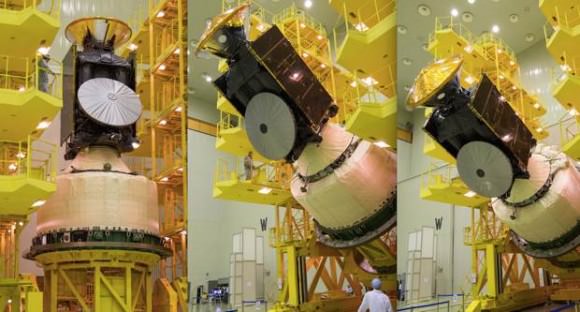
The incident is eerily similar to the fate that befell the Phobos-Grunt sample return mission. Also launched from Baikonur, the spacecraft was stranded in Earth orbit after its Fregat upper stage failed to do its job. Phobos-Grunt reentered on January 15th, 2012 just over two months after launch, taking its container of Planetary Society-funded tardigrades scheduled to make the round trip to Mars permanently to the bottom of the Pacific Ocean instead.
The Mars 96 mission also failed to leave Earth orbit, and reentered over South America on November 16th, 1996 with a radioactive payload meant for power surface penetrators bound for the Red Planet.
The Russians haven’t had good luck with Mars landers, though they fared better landing on Venus with their Venera program… and had at least one spare Venusian Death Probe crash on Earth and fight the Six Million Dollar Man back in the 1970’s TV show, to boot.
The U.S. has actually had pretty good luck on Mars, having only lost the Mars Polar Lander for seven successful landing attempts. If successful later this year, Schiaparelli will be a first landing on Mars for any other space agency other than NASA.

And you’ll be able to explore Mars for yourself shortly, as opposition season for the Red Planet is right around the corner. Opposition for 2016 occurs on May 22nd, and we’re in for a cycle of favorable oppositions leading up to one in 2018 that’s very nearly as favorable as the historic 2003 opposition.
Space is hard, but the ExoMars Trace Gas Orbiter seems to be made of still harder stuff, the likes of which no explosion in space can kill.
Onward to Mars!
ExoMars Mission Narrowly Avoids Exploding Booster

On March 14, the ExoMars mission successfully lifted off on a 7-month journey to the planet Mars but not without a little surprise. The Breeze-M upper booster stage, designed to give the craft its final kick toward Mars, exploded shortly after parting from the probe. Thankfully, it wasn’t close enough to damage the spacecraft.
Michel Denis, ExoMars flight director at the European Space Operations, Center in Darmstadt, Germany, said that the two craft were many kilometers apart at the time of the breakup, so the explosion wouldn’t have posed a risk. Still, the mission team won’t be 100% certain until all the science instruments are completely checked over in the coming weeks.
All went well during the takeoff and final separation of the probe, but then something odd happened. Breeze-M was supposed to separate cleanly into two pieces — the main body and a detachable fuel tank — and maneuver itself to a graveyard or “junk” orbit, where rockets and spacecraft are placed at the end of their useful lives, so they don’t cause trouble with operational satellites.
But instead of two pieces, tracking photos taken at the OASI Observatory in Brazil not long after the stage and probe separated show a cloud of debris, suggesting an explosion occurred that shattered the booster to pieces. There’s more to consider. Space probes intended to either land or be crashed into planets have to pass through strict sterilization procedures that rocket boosters aren’t subject to. Assuming the Breeze-M shrapnel didn’t make it to its graveyard orbit, there exists the possibility some of it might be heading for Mars. If any earthly bugs inhabit the remains, it could potentially lead to unwanted consequences on Mars.
And this isn’t the first time a Russian Breeze-M has blown up.
According to Russian space observer Anatoly Zak in a recent article in Popular Mechanics, a Breeze-M that delivered a Russian spy satellite into orbit last December exploded on January 16. Propellant in one of its fuel tanks may not have been properly vented into space; heated by the sun, the tank’s contents likely combusted and ripped the stage apart. A similar incident occurred in October 2012.
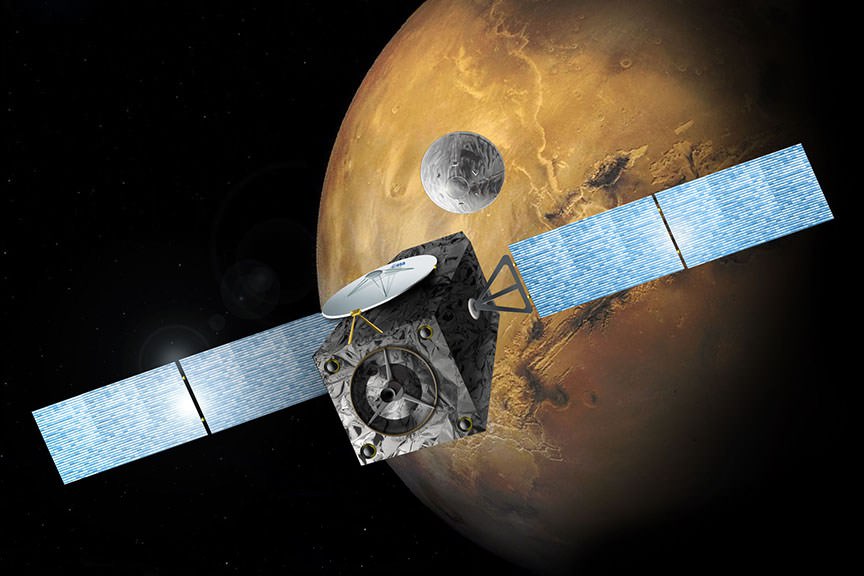
For now, we’ll embrace the good news that the spacecraft, which houses the Trace Gas Orbiter (TGO) and the Schiaparelli lander, are underway to Mars and in good health.
ExoMars is a joint venture between the European Space Agency (ESA) and the Russian Federal Space Agency (Roscosmos). One of the mission’s key goals is to follow up on the methane detection made by ESA’s Mars Express probe in 2004 to understand where the gas comes from. Mars’ atmosphere is 95% carbon dioxide with the remaining 5% divided among nitrogen, argon, oxygen and others including small amounts of methane, a gas that on Earth is produced largely by living creatures.
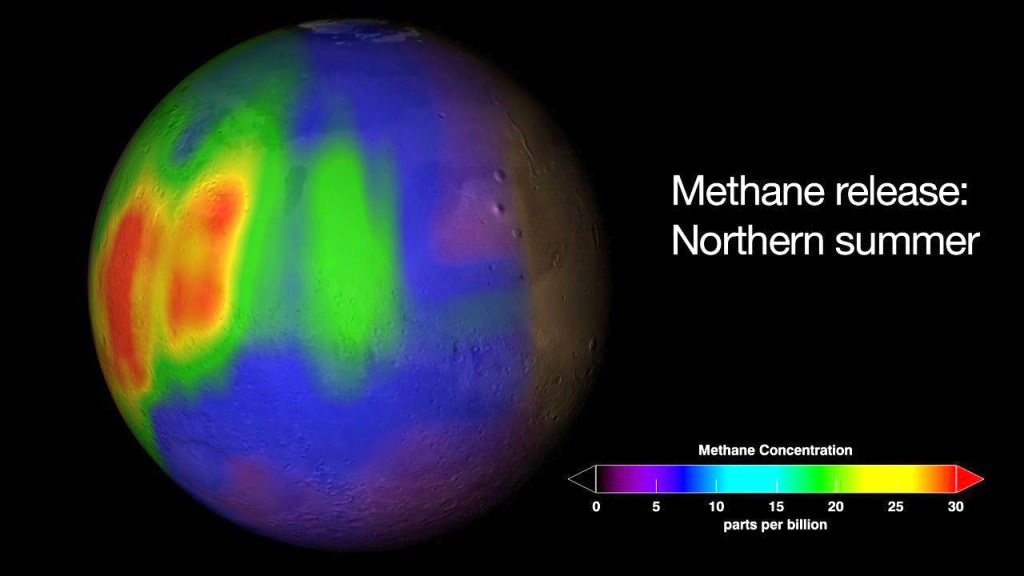
Scientists want to know how martian methane got into the atmosphere. Was it produced by biology or geology? Methane, unless it is continuously produced by a source, only survives in the Martian atmosphere for a few hundreds of years because it quickly breaks down to form water and carbon dioxide. Something is refilling the atmosphere with methane but what?
TGO will also look at potential sources of other trace gases such as volcanoes and map the planet’s surface. It can also detect buried water-ice deposits, which, along with locations identified as sources of the trace gases, could influence the choice of landing sites of future missions.
The orbiter will also act as a data relay for the second ExoMars mission — a rover and stationary surface science platform scheduled for launch in May 2018 and arriving in early 2019.
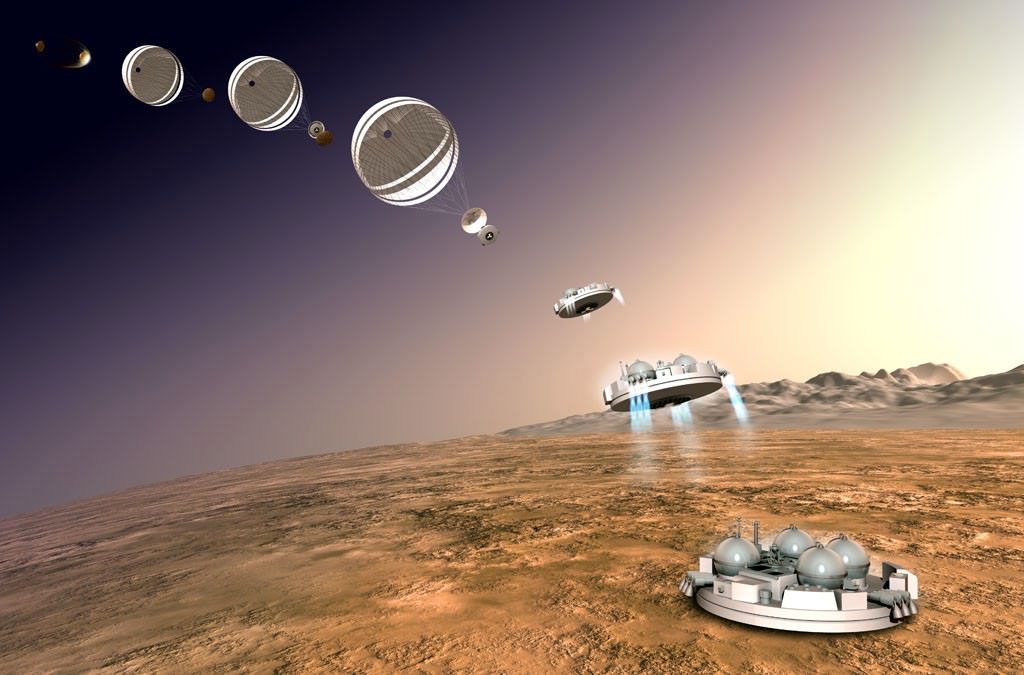
On October 16, when the spacecraft is still 559,000 miles (900,000 kilometers) from the Red Planet, the Schiaparelli lander will separate from the orbiter and three days later parachute down to the Martian surface. The orbiter will take measurements of the planet’s atmosphere (including methane) as well as any atmospheric electrical fields.

Mars is a popular place. There are currently five active orbiters there: two European (Mars Express and Mars Odyssey), two American (Mars Reconnaissance Orbiter and MAVEN), one Indian (Mars Orbiter Mission) and two rovers (Opportunity and Curiosity) with another lander and orbiter en route!
Weekly Space Hangout – Mar. 18, 2016: Song of the Stars
Host: Fraser Cain (@fcain)
Guests: Paul M. Sutter (pmsutter.com / @PaulMattSutter)
Paul, one of our WSH regular panelists, will be talking about Song of the Stars, a project he is leading that brings astronomy to life using modern dance.
Guests:
Dave Dickinson (www.astroguyz.com / @astroguyz)
Kimberly Cartier (@AstroKimCartier )
Their stories this week:
Comet P252 LINEAR Brightens and the pass of BA14 PanSTARRS
Solving the mystery of the disappearing quasar
Fast Radio Burst afterglow most likely an AGN
We’ve had an abundance of news stories for the past few months, and not enough time to get to them all. So we’ve started a new system. Instead of adding all of the stories to the spreadsheet each week, we are now using a tool called Trello to submit and vote on stories we would like to see covered each week, and then Fraser will be selecting the stories from there. Here is the link to the Trello WSH page (http://bit.ly/WSHVote), which you can see without logging in. If you’d like to vote, just create a login and help us decide what to cover!
We record the Weekly Space Hangout every Friday at 12:00 pm Pacific / 3:00 pm Eastern. You can watch us live on Google+, Universe Today, or the Universe Today YouTube page.
You can also join in the discussion between episodes over at our Weekly Space Hangout Crew group in G+!
Bold Euro-Russian Expedition Blasts Free of Earth En Route to Mars in Search of Life’s Indicators
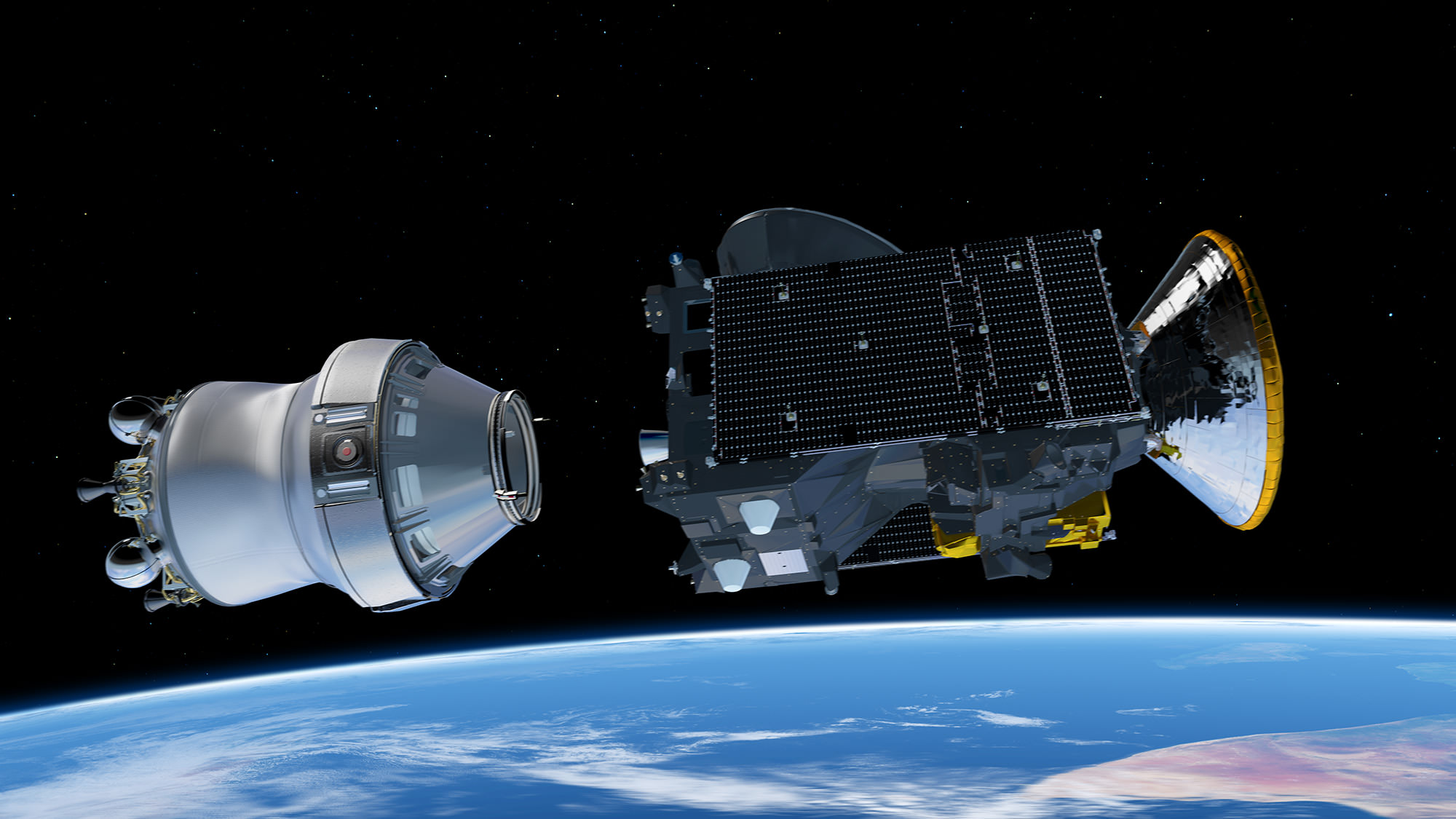
The cooperative Euro-Russian ExoMars 2016 expedition is now en route to the Red Planet after successfully firing its upper stage booster one final time on Monday evening, March 15, to blast free of the Earth’s gravitational tug and begin a 500 million kilometer interplanetary journey in a bold search of indications of life emanating from potential Martian microbes.
The vehicle is in “good health” with the solar panels unfurled, generating power and on course for the 500 Million kilometer (300 million mile) journey to Mars.
“Acquisition of signal confirmed. We have a mission to Mars!” announced Mission Control from the European Space Agency.
The joint European/Russian ExoMars spacecraft successfully blasted off from the Baikonur Cosmodrome in Kazakhstan atop a Russian Proton-M rocket at 5:31:42 a.m. EDT (0931:42 GMT), Monday, March 14, with the goal of searching for possible signatures of life in the form of trace amounts of atmospheric methane on the Red Planet.
Video caption: Blastoff of Russian Proton rocket from the Baikonur Cosmodrome carrying ExoMars 2016 mission on March 14, 2016. Credit: Roscosmos
The first three stages of the 191-foot-tall (58-meter) Russian-built rocket fired as scheduled over the first ten minutes and lofted the 9,550-pound (4,332-kilogram) ExoMars to orbit.
Three more firings from the Breeze-M fourth stage quickly raised the probe into progressively higher temporary parking orbits around Earth.
But the science and engineering teams from the European Space Agency (ESA) and Roscosmos had to keep their fingers crossed and endure an agonizingly long wait of more than 10 hours before the fourth and final ignition of the Proton’s Breeze-M upper stage required to break the bonds of Earth.
The do or die last Breeze-M upper stage burn with ExoMars still attached was finally fired exactly as planned.
The probe was released at last from the Breeze at 20:13 GMT.
However, it took another long hour to corroborate the missions true success until the first acquisition of signal (AOS) from the spacecraft was received at ESA’s control centre in Darmstadt, Germany via the Malindi ground tracking station in Africa at 5:21:29 p.m. EST (21:29 GMT), confirming a fully successful launch with the spacecraft in good health.
It was propelled outwards to begin a seven-month-long journey to the Red Planet to the great relief of everyone involved from ESA, Roscosmos and other nations participating. An upper stage failure caused the total loss of Russia’s prior mission to Mars; Phobos-Grunt.
“Only the process of collaboration produces the best technical solutions for great research results. Roscosmos and ESA are confident of the mission’s success,” said Igor Komarov, General Director of the Roscosmos State Space Corporation, in a statement.
The ExoMars 2016 mission is comprised of a joined pair of European-built spacecraft consisting of the Trace Gas Orbiter (TGO) plus the Schiaparelli entry, descent and landing demonstrator module, built and funded by ESA.
“It’s been a long journey getting the first ExoMars mission to the launch pad, but thanks to the hard work and dedication of our international teams, a new era of Mars exploration is now within our reach,” says Johann-Dietrich Woerner, ESA’s Director General.
“I am grateful to our Russian partner, who have given this mission the best possible start today. Now we will explore Mars together.”

The cooperative mission includes significant participation from the Russian space agency Roscosmos who provided the Proton-M launcher, part of the science instrument package, the surface platform and ground station support.
The Trace Gas Orbiter (TGO) and Schiaparelli lander are speeding towards Mars joined together, on a collision course for the Red Planet. They will separate on October 16, 2016 at distance of 900,000 km from the planet, three days before arriving on October 19, 2016.
TGO will fire thrusters to alter course and enter an initial four-day elliptical orbit around the fourth planet from the sun ranging from 300 km at its perigee to 96 000 km at its apogee, or furthest point.
Over the next year, engineers will command TGO to fire thrusters and conduct a complex series of ‘aerobraking’ manoeuvres that will gradually lower the spacecraft to circular 400 km (250 mi) orbit above the surface.
The science mission to analyse for rare gases, including methane, in the thin Martian atmosphere at the nominal orbit is expected to begin in December 2017.
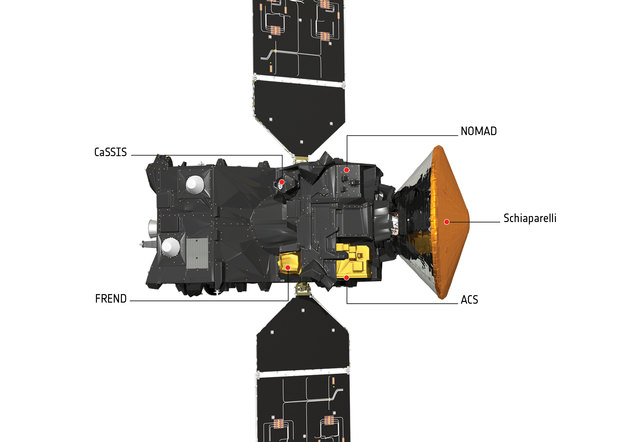
ESA/ATG medialab
As TGO enters orbit, the Schiaparelli lander will smash into the atmosphere and begin a harrowing six minute descent to the surface.
The main purpose of Schiaparelli is to demonstrate key entry, descent, and landing technologies for the follow on 2nd ExoMars mission in 2018 that will land the first European rover on the Red Planet.
The battery powered lander is expected to operate for perhaps four and up to eight days until the battery is depleted.
It will conduct a number of environmental science studies such as “obtaining the first measurements of electric fields on the surface of Mars that, combined with measurements of the concentration of atmospheric dust, will provide new insights into the role of electric forces on dust lifting – the trigger for dust storms,” according to ESA.
Stay tuned here for Ken’s continuing Earth and planetary science and human spaceflight news.
ExoMars Spacecraft Launches to Red Planet Searching for Signs of Life
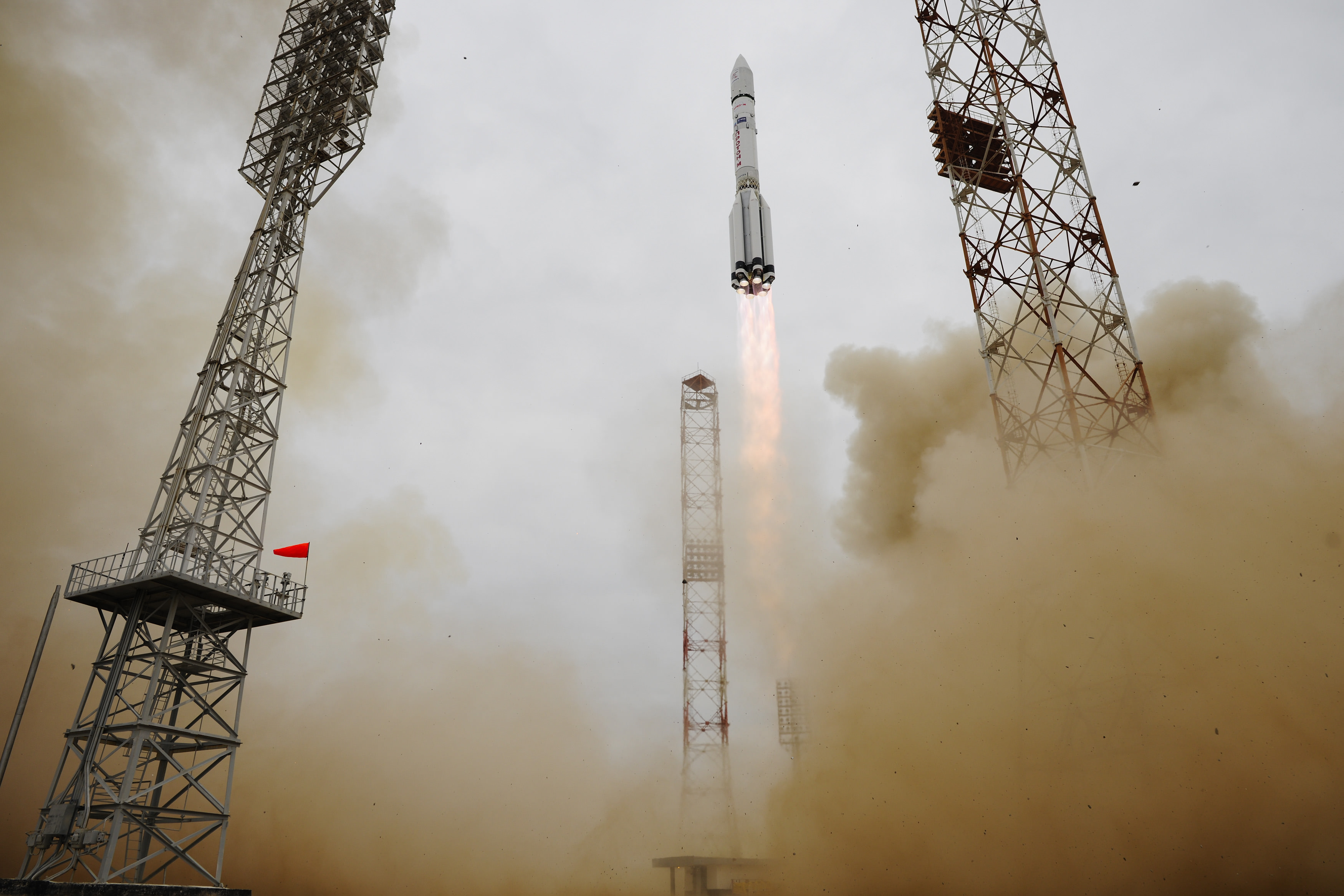

The joint European/Russian ExoMars spacecraft successfully launched early this morning from the Baikonur Cosmodrome in Kazakhstan atop a Proton-M rocket at 5:31:42 a.m. EDT (0931:42 GMT), Monday, March 14, with the goal of searching for signs of life on the Red Planet.
After settling into orbit around Mars, it’s instruments will scan for minute signatures of methane gas that could possibly be an indication of life or of nonbiologic geologic processes ongoing today.
The spacecraft is currently circling in a temporary and preliminary parking orbit around Earth following liftoff of the 191-foot-tall (58-meter) Russian-built rocket under overcast skies – awaiting a critical final engine burn placing the probe on an interplanetary trajectory to Mars.
The 9,550-pound (4,332-kilogram) ExoMars 2016 spacecraft continued soaring to orbit after nominal firings of the Proton’s second and third stages and jettisoning of the payload fairing halves protecting the vehicle during ascent through Earth’s atmosphere.
A total of four more burns from the Breeze-M upper stage are required to boost ExoMars higher and propel it outwards on its seven-month-long journey to the Red Planet.
So the excitement and nail biting is not over yet and continues to this moment. The final successful outcome of today’s mission cannot be declared until more than 10 hours after liftoff – after the last firing of the Breeze-M upper stage sets the probe on course for Mars and escaping the tug of Earth’s gravity.
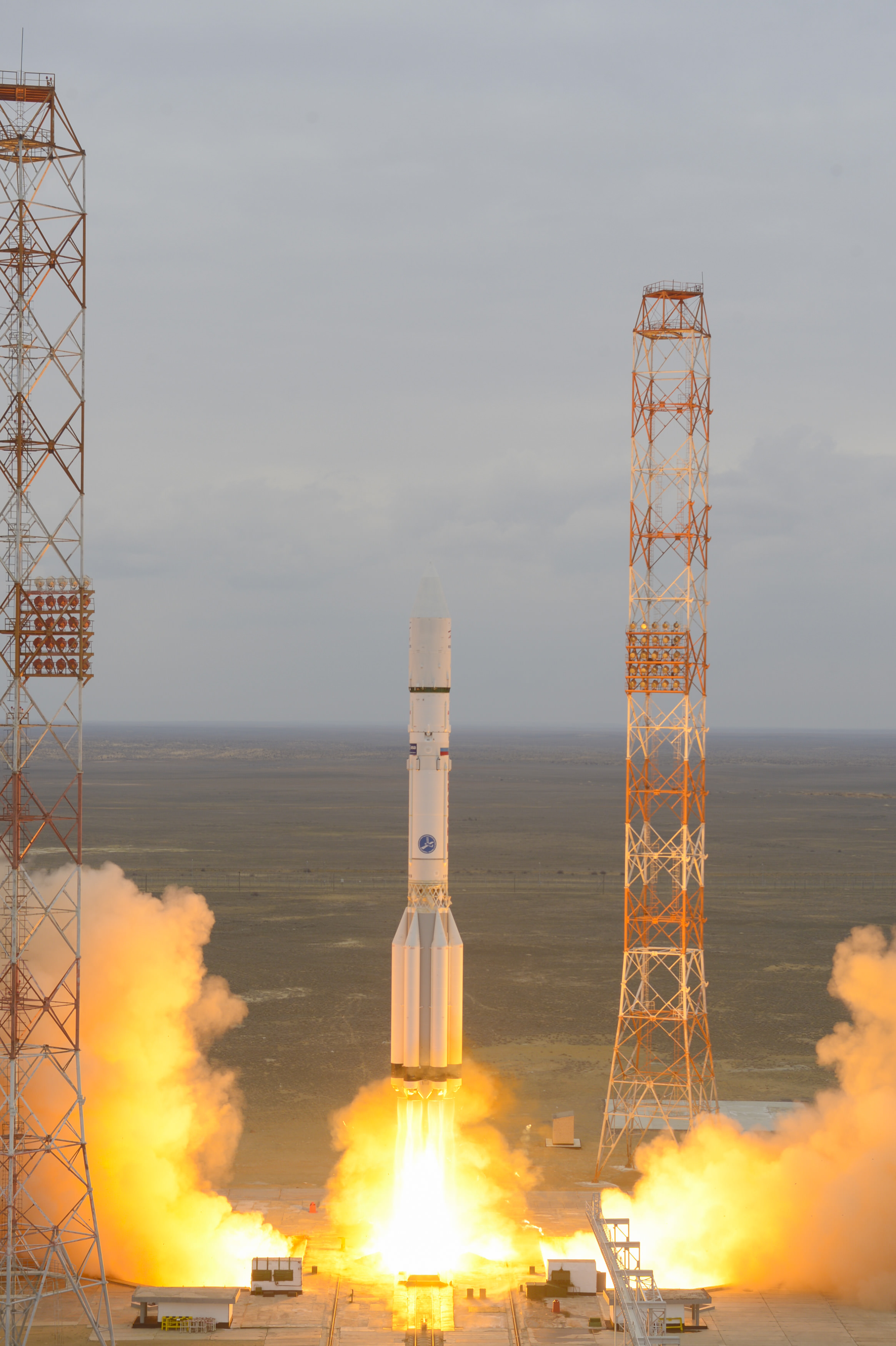
The first three Breeze-M fourth stage burns have now been completed as of about 9:40 am EST, according to ESA mission control on Darmstadt, Germany.
The fourth and final ignition of the Breeze-M upper stage and spacecraft separation is slated for after 3 p.m. EDT today, March 14, 2016.
The first acquisition of signal from the spacecraft is expected later at about 5:21:29 p.m. EST (21:29 GMT).

The ExoMars 2016 mission is comprised of a joined pair of European-built spacecraft consisting of the Trace Gas Orbiter (TGO) plus the Schiaparelli entry, descent and landing demonstrator module, built and funded by the European Space Agency (ESA).
The cooperative mission includes significant participation from the Russian space agency Roscosmos who provided the Proton-M launcher, part of the science instrument package, the surface platform and ground station support.
The launch was carried live courtesy of a European Space Agency (ESA) webcast:
http://www.esa.int/Our_Activities/Space_Science/ExoMars/Watch_ExoMars_launch
ESA is continuing live streaming of the launch events throughout the day as burns continue and events unfold lead up to the critical final burn of the Breeze-M upper stage
The ExoMars 2016 TGO orbiter is equipped with a payload of four science instruments supplied by European and Russian scientists. It will investigate the source and precisely measure the quantity of the methane and other trace gases, present at levels of one percent or far less.
On Earth methane can be produced by biology, volcanoes, natural gas and hydrothermal activity. TGO will investigate what makes it on Mars and follow up on measurements from NASA’s Curiosity rover and other space based assets and telescopes.
Martian methane has a lifetime of about 400 years, until it is destroyed by solar UV & mixed by atmosphere, says Jorge Vago, ESA ExoMars 2016 principal scientist.
The 2016 lander will carry an international suite of science instruments and test European entry, descent and landing (EDL) technologies for the 2nd ExoMars mission in 2018.
The battery powered lander is expected to operate for perhaps four and up to eight days until the battery is depleted.
The 2018 ExoMars mission will deliver an advanced rover to the Red Planet’s surface.
It is equipped with the first ever deep driller that can collect samples to depths of 2 meters (seven feet) where the environment is shielded from the harsh conditions on the surface – namely the constant bombardment of cosmic radiation and the presence of strong oxidants like perchlorates that can destroy organic molecules.
ExoMars was originally a joint NASA/ESA project.
But thanks to hefty cuts to NASA’s budget by Washington DC politicians, NASA was forced to terminate the agencies involvement after several years of extremely detailed work and withdraw from participation as a full partner in the exciting ExoMars missions.
NASA is still providing the critical MOMA science instrument that will search for organic molecules.
Thereafter Russia agreed to take NASA’s place and provide the much needed funding and rockets for the pair of launches in March 2016 and May 2018.
TGO will also help search for safe landing sites for the ExoMars 2018 lander and serve as the all important data communication relay station sending signals and science from the rover and surface science platform back to Earth.
ExoMars 2016 is Europe’s most advanced mission to Mars and joins Europe’s still operating Mars Express Orbiter (MEX), which arrived back in 2004, as well as a fleet of NASA and Indian probes.

ESA/ATG medialab
The Trace Gas Orbiter (TGO) and Schiaparelli lander arrive at Mars on October 19, 2016.
Stay tuned here for Ken’s continuing Earth and planetary science and human spaceflight news.
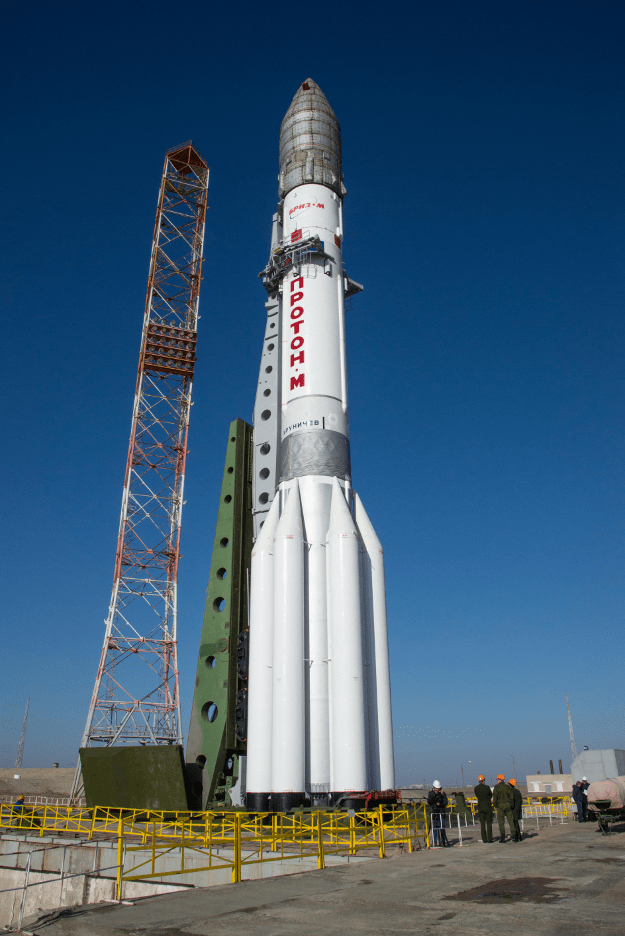
Copyright: ESA – B. Bethge
Countdown Begins for Blastoff of ExoMars 2016 Spacecraft on March 14 – Watch Live
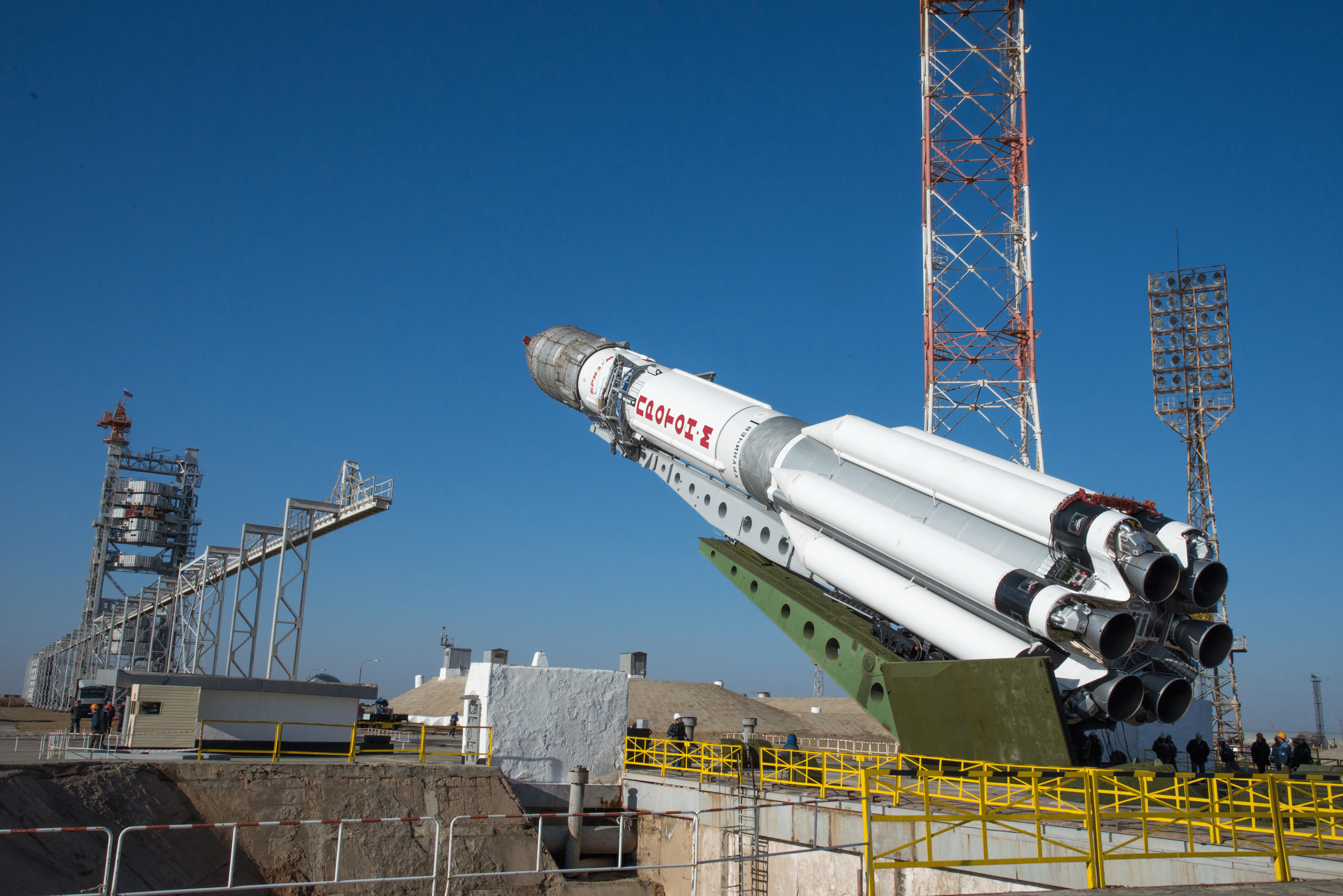

Copyright: ESA – B. Bethge
The countdown has begun for blastoff of the ambitious European/Russian ExoMars 2016 spacecraft from the Baikonur Cosmodrome in Kazakhstan on March 14. Its goal is to search for minute signatures of methane gas that could possibly be an indication of life or of nonbiologic geologic processes ongoing today.
Final launch preparations are now in progress. Liftoff of the powerful Russian Proton booster from Baikonur carrying the ExoMars spacecraft is slated for 5:31:42 a.m. EDT (0931:42 GMT), Monday morning, March 14.
You can watch the launch live courtesy of a European Space Agency (ESA) webcast:
http://www.esa.int/Our_Activities/Space_Science/ExoMars/Watch_ExoMars_launch
The prelaunch play by play begins with live streaming at 4:30 a.m. EDT (08:30 GMT).
The first acquisition of signal from the spacecrft is expected at 21:29 GMT
As launch and post launch events unfold leading to spacecraft separation, ESA plans additional live streaming events at 7:00 a.m. EDT (11:00 GMT) and 5:10 p.m. (21:10 GMT)
Spacecraft separation from the Breeze upper stage is expected at about 10 hours, 41 minutes.

The ExoMars 2016 mission is comprised of a pair of European spacecraft named the Trace Gas Orbiter (TGO) and the Schiaparelli entry, descent and landing demonstration lander, built and funded by the European Space Agency (ESA).
Russian is providing the Proton booster and part of the science instrument package.
“The main objectives of this mission are to search for evidence of methane and other trace atmospheric gases that could be signatures of active biological or geological processes and to test key technologies in preparation for ESA’s contribution to subsequent missions to Mars,” says ESA.

Copyright: ESA – B. Bethge
ExoMars is Earth’s lone mission to the Red Planet following the two year postponement of NASA’s InSight lander from 2016 to 2018 to allow time to fix a defective French-built seismometer.
ESA reported late today , March 13, that at T-minus 12 hours the Trace Gas Orbiter has been successfully switch on, a telemetry link was established and the spacecrft battery charging has been completed.
The Proton rocket with the encapsulated spacecraft bolted atop were rolled out to the Baikonur launch pad on Friday, March 11 and the launcher was raised into the vertical position.
ESA mission controller then completed a full launch dress rehearsal on Saturday, March 12.
The ExoMars 2016 TGO orbiter is equipped with a payload of four science instruments supplied by European and Russian scientists. It will investigate the source and precisely measure the quantity of the methane and other trace gases.
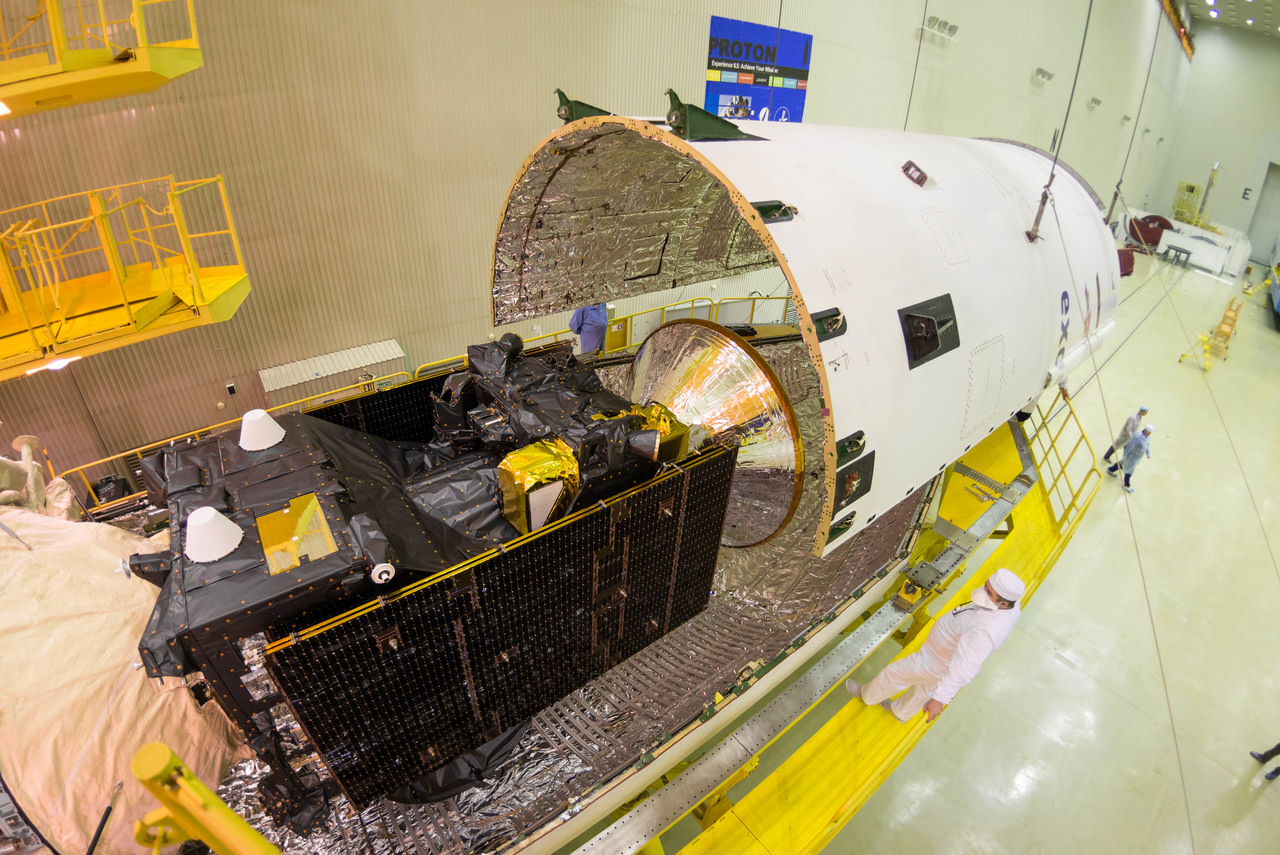
Stay tuned here for Ken’s continuing Earth and planetary science and human spaceflight news.
Scientists Want ExoMars Rover to Land at Oxia Planum
The joint ESA and Russian ExoMars rover’s top priority is to search the Martian surface for signs of life, past or present, and scientists think they know just the spot where – if life ever existed or exists on Mars – it might be found. Today the ExoMars team announced that the equatorial region named Oxia Planum has been recommended as the primary candidate for the landing site.
“Our preliminary analysis shows that Oxia Planum appears to satisfy the strict engineering constraints while also offering some very interesting opportunities to study, in situ, places where biosignatures might best be preserved,” said Jorge Vago, ESA’s project scientist.
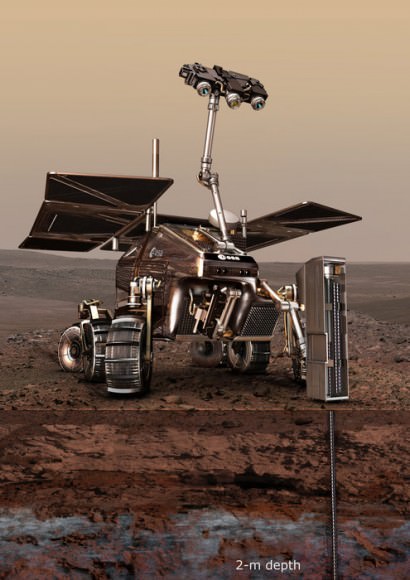
The rover is currently scheduled to launch in 2018 and land on Mars in 2019, but the timetable is still under review, depending on any issues with construction of the rover. While the final landing site won’t be selected by both ESA and Roscosmos until six months before launch, this recommendation will weigh heavily in the decision.
Some of the priority requirements for the landing site is that is must show abundant morphological and mineralogical evidence for long-duration, or frequently reoccurring water activity, and that there should be numerous sedimentary rock outcrops.
From orbital study by previous missions, Oxia Planum is known to contain clays, and there appears to be remnants of a possible fan or delta, as seen in the image above from the HiRISE camera on the Mars Reconnaissance Orbiter. This would be one of the potential science targets.
The site selection process has been under way since late 2013, when the science community was asked to propose candidates. In October 2014, four candidates were chosen by the Landing Site Selection Working Group. Now this month, October 2015, the same group met to determine two candidate sites that conform best to both the engineering constraints of descent and landing, and the best possible scientific return of the mission. But their preference for now is Oxia Planum. The team will continue to debate the merits and safety of the proposed sites.

ESA said that all four sites that have been under study – Aram Dorsum, Hypanis Vallis, Mawrth Vallis and Oxia Planum – show evidence of having been influenced by water in the past, and are likely representative of global processes operating in the Red Planet’s early history.
Additionally, all locations offer the opportunity of landing at a scientifically interesting site or finding one within a 1 km drive from the touchdown point, with numerous targets accessible along a typical 2 km traverse planned for the mission of 218 martian days (each 24 hours 37 minutes).
The ExoMars mission is a dual mission with one part launching in 2016 (the Trace Gas Orbiter plus an Entry, Descent and Landing Demonstrator Module) and the rover tentatively scheduled to launch in 2018. As final site selection comes closer, the scientists involved with the mission are anticipating the mission. Professor Andrew Coates who leads the ExoMars PanCam team for the 2018 rover tweeted this today:
ExoMars will land on clays in old region – possible delta – great place to drill, can't wait for PanCam images https://t.co/Hi0gHk46z1
— Andrew Coates (@PlanetAndrewC) October 21, 2015
Further reading: ESA
Beagle 2: Found on Mars After An 11 Year Hunt
The final chapter in the saga of a wayward Mars lander was finally revealed today, as an international team released images showing the Beagle-2 lander’s final resting place on Mars.
Flashback to Christmas Day, 2003. While most folks gathered ‘round the tree and opened presents, the UK and European Space Agency awaited a gift from space. The Beagle-2 Mars lander had been released from the European Space Agency’s Mars Express orbiter six days prior, and was coasting towards a perilous landing in Isidis Planitia and was set to phone home.
All was going according to plan, and then… silence.
It’s the worst part of any mission, waiting for a lander to call back and say that it’s safe and sound on the surface of another world. As the hours turned into days, anxious engineers used NASA’s Mars Odyssey spacecraft and the Lovell Telescope at Jodrell Bank to listen for the signal.
Beagle-2 was declared lost a few weeks later on February 6th, 2004.
But now, there’s a final twist to the tale to tell.

The UK Space Agency, working with ESA and NASA announced today that debris from the landing site had been identified and that indicates — contrary to suspicions — that Beagle-2 did indeed make it to the surface of the Red Planet intact. New images from the Mars Reconnaissance Orbiter released today suggest that not only did Beagle-2 land, but that its airbags did indeed deploy properly and that the dish-shaped 1-meter in diameter spacecraft partially unfolded pocket-watch style after it had bounced to a stop.
“We are very happy to learn that Beagle 2 touched down on Mars,” said ESA’s Director of Science and Robotic Exploration in a recent press release. “The dedication of the various teams in studying high-resolution images in order to find the lander is inspiring.”
So, what went wrong with Beagle-2?
At this point, no further speculation as to what caused the lander to fall silent has been forthcoming, but today’s revelation is sure to rewrite the final saga of Beagle-2.
“Not knowing what happened to Beagle-2 remained a nagging worry,” said ESA’s Mars Express project manager Rudolf Schmidt. “Understanding now that Beagle-2 made it all the way down to the surface is excellent news.”
Speculation swirled across the internet earlier this week as the UK Space Agency and ESA suggested that new information as to the fate of Beagle-2 was forthcoming, over 11 years after the incident. Back in 2004, it was suggested that Beagle-2 had encountered higher levels of dust in the Martian atmosphere than expected, and that this in turn resulted in a failure of the spacecraft’s parachutes. Presumably, the lander then failed to slow down sufficiently and crashed on the surface of Mars, the latest victim of the Great Galactic Ghoul who seems to love dining on human-built spacecraft bound for the Red Planet.
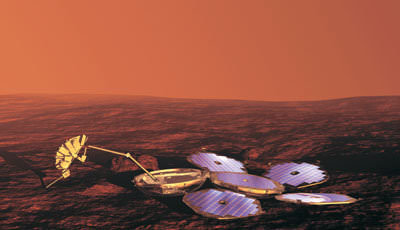
The loss of Beagle-2 wasn’t only a blow to the UK and ESA, but to its principal investigator Colin Pillinger as well. Pillinger was involved in the search for Beagle-2 in later years, and also played a part in the Rosetta mission to Comet 67P/Churyumov-Gerasimenko as well. Unfortunately, Pillinger passed away in May of last year from a brain hemorrhage. A portion of the western rim of Endeavour Crater currently being explored by Opportunity was named Pillinger Point in his honor.
Today’s announcement has triggered a wave of congratulations that the 11-year mystery has been solved. There have even been calls on Twitter and social media to rename the Beagle-2 site Pillinger Station.
“The history of of space exploration is marked by both success and failure,” Said Dr. David Parker, the Chief Executive of the UK Space Agency in a recent press release. “This finding makes the case that Beagle-2 was more of a success than we previously knew and undoubtedly an important step in Europe’s continuing exploration of Mars.”

Beagle-2 is about 2 metres across unfurled, and came to rest within 5 kilometres of its target location.
There have been false announcements of the discovery of Beagle-2 before. Back in late 2005, a claim was made that the lander had been spotted by Mars Global Surveyor, though later searches came to naught.
“I can imagine the sense of closure that the Beagle-2 team must feel,” Said JPL’s MRO project scientist Richard Zurek in a recent press release. “MRO has helped find safe landing sites on Mars for the Curiosity and Phoenix missions and has searched for missing craft to learn what may have gone wrong. It’s an extremely difficult task.”
MRO entered orbit in March 2006 and carries a 0.5 metre in diameter HiRISE camera capable of resolving objects just 0.3 metres across on the surface of Mars. The European Space Agency’s Mars Express orbiter that carried Beagle 2 is also still in operation, along with NASA’s aging Mars Odyssey spacecraft. These were joined in orbit by MAVEN and India’s Mars Orbiter just last year.
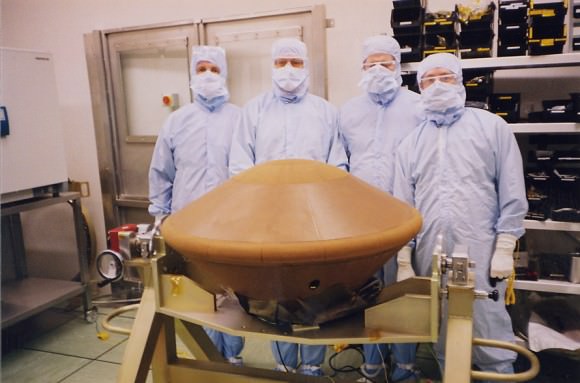
Of course, getting to Mars is tough, and landing is even harder. Mars has just enough atmosphere that you have to deal with it, but it’s so tenuous – 0.6% the surface pressure of Earth’s atmosphere at sea level – That it doesn’t provide a whole lot of usable drag.
To date, only NASA had successfully landed on Mars, and done it seven times – only the Mars Polar Lander failed back in 1999. The Russians fared much worse, with their most successful lander being Mars 3, which sent back only one blurry image before falling silent.
ESA and the Russian Federal Space Agency hope to amend that with the launch of the ExoMars mission next year, slated to land on Mars in 2018.
I remember waiting with millions of other space fans for word back from Beagle 2 on Christmas Day 2003. Think back to what your internet connection was like over 11 years ago, in an era before smart phones, Twitter and Facebook. We’d just come off of the spectacular 2003 Mars opposition season, which provided the orbital geometry ideal for launching a mission to the Red Planet. This window only comes around once every 26 months.
Though Beagle 2 was a stationary lander akin to the Viking and Mars Phoenix missions, it had a robotic arm and a clever battery of experiments, including ones designed to search for life. The signal it was supposed to use to call home was designed by the UK pop rock band Blur, a jingle that never came.
Alas, we’ll have to wait to see what the alien plains around Isidis Planitia actually look like, just 13 degrees north of the Martian equator. But hey, a lingering mystery of the modern age of planetary exploration was solved this week.
Still, we’re now left with a new dilemma. Does this mean we’ll have to write a sequel to our science fiction short story The Hunt for Beagle?
-Read free original science fiction from Dave Dickinson every Friday, including ongoing chapters from The Hunt for Beagle.
Canadian Micro-Rover and Lander “Northern Light” Aim for Launch to Mars in 2018
The first Canadian mission to Mars could be blasting off towards the Red Planet in just three years time. At least, that is what Thoth Technology, a Canadian aerospace company from Pembroke, Ontario, hopes to accomplish. And two days ago, they launched an Indiegogo campaign to raise the 1.1 million dollars needed to pay for all the hardware needed to make the mission happen.
If it is successful, it would be first Canadian mission to the surface of Mars.
The project for this Canadian mission would involve sending the Northern Light lander and Beaver rover in space and land them on Mars. Once there, the Beaver rover will be deployed and begin conducting surveys of the Martian surface, alongside the many other robotic rovers and orbiters studying the Martian landscape.
“I think it’s important to do big things,” said Ben Quine, principal investigator for the mission. “Mars is the only other habitable planet in the solar system, and if we want to survive, we need to be a multi-planet species.”
Quine is the technical director and chair of the board at Thoth Technology and a professor of space engineering at York University, which is a partner on the project, houses a lot of the space testing facilities, and will analyze the data from the mission.

The main goal of the mission is to expand upon the efforts being made by NASA’s Curiosity, Spirit, and Opportunity rovers, which have only explored a half dozen sites on Mars. By exploring more areas, they hope to find other signs of life on the harsh landscape, and using knowledge gleaned from studies in the Canadian Arctic no less.
According to Quine, in Antarctica and the Canadian Arctic, photosynthetic microbes can be found in a layer a millimeter or two below the surface of the rock. Here, they are protected from the harshest of the sun’s UV rays, but can still use sunlight to produce energy.
Northern Light will look for similar life on Mars by using the lander’s robotic arm to grind away the surface of rocks. It will then use a device called a photometer to scan for different shades of green that may indicate the presence of photosynthetic organisms. Quine and his colleagues also hope to determine what future technologies will be required to sustain a future human presence.
“If we are serious about living on Mars,” he said, “we need to explore it much more thoroughly. We probably need hundreds of landers to pepper the surface prior to sending people so we know exactly what it is that we’re up against, where we’d find things like minerals and where we’d want to live.”
Intrinsic to the company’s plan is the widespread exploration of Mars using low cost, off-the-shelf technology. For example, the Northern Light lander probe has a mass under 50 kg (including payload) and is made of an advanced composite material that includes thermal shielding and shock absorption. The probe includes solar arrays to generate power for the instrumentation and lander avionics.
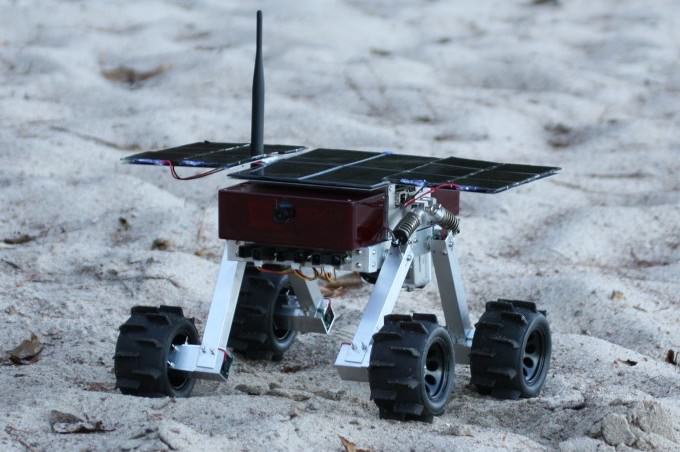
As for the Beaver rover, its small size and low-cost mask the fact that it is like no other rover that has ever gone to Mars. For one thing, it weighs just six kilograms (13 pounds). In comparison, NASA’s Curiosity rover weighs in at a hefty 900 kilograms (1980 pounds, close to an imperial ton), forcing it to rely largely on nuclear power to lug its bulk around.
The NASA rovers, which are controlled from Earth, also move very slowly and cover only a few dozen meters per day because their commands take 15 minutes to reach Mars from Earth. By contrast, the Beaver rover is designed to be quicker, in part by being more independent.
“We’re going to embed intelligence into the rover,” Quine said, “and the rover is going to be tasked to drive around and explore the environment using autonomous algorithms built into the rover to determine things like when it should make a maneuver to avoid falling into a hole or run into a rock.”
Quine said he has already spent 12 years working on the project and his team has spent half a million dollars developing and testing prototypes of the lander and micro-rover. They’ve also performed space tests on some of the instruments by flying them on satellites in low-Earth orbit.

Thoth Technologies also recently spent $1 million leasing and repairing the Algonquin Radio Observatory from the federal government, which they plan to use as a ground station to communicate with the lander and rover when they are on Mars.
As for the tricky task of getting to Mars, Quine and his colleagues hope to barter their way aboard one of the many missions heading to Mars in 2018. These include the joint Russian-European Space Agency ExoMars rover mission and an Indian Space Research Organization mission that will likely include a lander and rover.
In exchange for hitching a ride on one of these rockets, they will collect and relay other agencies’ data from Mars via the ARO ground station, which can collect them at times of day when places like Russia and India are facing away from Mars.
Those who are interested in supporting their campaign are being incentivized with a chance to help choose the landing site for the mission, and will get rewards ranging from a Frisbee for $20 or the chance to name the lander for $1 million.
The company has also launched a social campaign – featuring Ed Robertson of the “Barenaked Ladies” – urging people to create and upload their own “Mars dance” video to marsrocks.ca.
To find out more, check out their promotional video or click on the link below:
Further Reading: Mars Rocks

